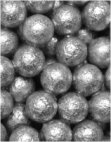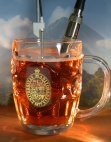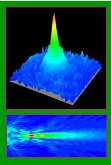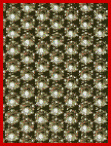Ultrasonics Research Laboratory
Dr. J.H. Page
Department of Physics and Astronomy
University of Manitoba, Winnipeg MB Canada R3T 2N2
Telephone: (204) 474-9852, FAX: (204) 474-7622
Department of Physics and Astronomy
University of Manitoba, Winnipeg MB Canada R3T 2N2
Telephone: (204) 474-9852, FAX: (204) 474-7622
Dynamic Speckle Pattern
When ultrasonic waves travel through a strongly scattering, random medium, they interfere to form a speckle pattern in which the intensity fluctuates across the output face of the sample. This animation shows how the pattern evolves in time during a pulsed experiment, as the pulse travels longer and longer multiple scattering paths through the sample. Click on the picture for more.



